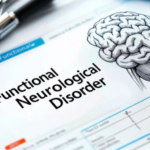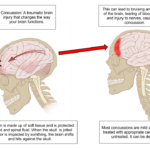Physiotherapy Treatment Protocol for Post-Traumatic Mechanical Shoulder Pain
Overview of Conditions:
Post-traumatic mechanical shoulder pain typically follows an injury or trauma, such as fractures, dislocations, rotator cuff tears, or ligament sprains. This condition is marked by pain, swelling, restricted range of motion (ROM), and weakness, leading to functional limitations. Common causes include falls, sports injuries, and accidents, all of which can result in structural damage to the shoulder joint. Post-traumatic pain can persist from weeks to months, depending on the injury severity and rehabilitation effectiveness.
Etiology:
- Fractures: Clavicle, humeral head, or scapula fractures.
- Dislocations: Anterior or posterior dislocations can damage the labrum, capsule, or rotator cuff.
- Rotator Cuff Tears: Sudden movements or forceful activities can cause traumatic tears.
- Acromioclavicular Joint Sprains: Resulting from direct trauma or falls onto an outstretched hand (FOOSH).
- Labral Tears: Common with dislocations or traumatic overhead motions, causing instability and pain.
Assessment and Evaluation:
- History:
- Mechanism of Injury: Identify the cause of the trauma (e.g., fall, collision, lifting injury).
- Duration: Assess the time since injury and any treatments administered.
- Pain Characterization: Classify pain (sharp, dull, throbbing) and assess intensity using tools like the Visual Analog Scale (VAS) or Numeric Pain Rating Scale (NPRS).
- Functional Impact: Evaluate limitations in activities of daily living (ADLs) such as dressing, lifting, or carrying.
- Pain Assessment:
- Use VAS or NPRS to quantify pain.
- Assess the pain pattern (constant, intermittent, aggravated by certain movements).
- Physical Examination:
- Postural Assessment: Check for signs of guarding, asymmetry, or muscle atrophy, especially in the rotator cuff or scapular stabilizers.
- Palpation: Palpate the clavicle, acromion, humeral head, and surrounding muscles for tenderness or swelling.
- Range of Motion (ROM): Assess both active and passive ROM, focusing on flexion, abduction, and external rotation.
- Strength Testing: Assess strength of the rotator cuff muscles and scapular stabilizers.
- Special Tests:
- Apprehension Test (for dislocation).
- Load and Shift Test (for instability).
- Neer’s Test and Hawkins-Kennedy Test (for impingement).
- Empty Can Test and Drop Arm Test (for rotator cuff integrity).
Goal Setting:
Short-Term Goals:
- Reduce pain and inflammation (VAS ≤ 3).
- Decrease muscle spasms and promote soft tissue healing.
- Improve passive ROM to prevent joint stiffness.
- Restore early mobility for ADLs (e.g., dressing, self-care).
Long-Term Goals:
- Restore full ROM, particularly external rotation and abduction.
- Strengthen the rotator cuff and scapular stabilizers to prevent recurrence and promote joint stability.
- Restore functional capacity for activities requiring overhead motions or lifting.
- Prevent chronic pain and facilitate return to pre-injury function, including sports and work tasks.
Recommended Treatment:
Electrotherapy:
- Transcutaneous Electrical Nerve Stimulation (TENS):
- Indication: Pain relief and muscle spasm reduction in the acute phase.
- Parameters: Frequency 80-120 Hz, intensity comfortable but sub-threshold for pain relief, pulse width 100-300 µs, 20-30 minutes, 2-3 times/day.
- Mechanism: Stimulates sensory fibers to reduce pain perception and muscle spasms, enhancing circulation and healing.
- Interferential Therapy (IFT):
- Indication: Tissue healing, pain reduction, deeper tissue stimulation in the chronic phase.
- Parameters: Frequency 4,000 Hz carrier frequency, modulated at 80-150 Hz, 20-30 minutes.
- Mechanism: Promotes deeper tissue penetration, circulation, and muscle spasm reduction.
- Class 4 LASER Therapy:
- Indication: Promotes healing, reduces inflammation, and decreases pain.
- Parameters: Wavelength 800-900 nm, power 5-10 W, duration 5-8 minutes.
- Mechanism: Enhances cell regeneration, increases circulation, and accelerates tissue healing.
- Ultrasound Therapy:
- Indication: Decreases pain, promotes tissue healing, and reduces muscle tightness.
- Parameters: Frequency 1 MHz, intensity 0.5-1.0 W/cm², duration 5-10 minutes.
- Mechanism: Increases tissue temperature, promotes collagen synthesis, and reduces stiffness.
Thermotherapy:
- Moist Heat Packs:
- Indication: Pain relief and muscle relaxation in subacute and chronic phases.
- Application: Apply moist heat packs for 15-20 minutes.
- Mechanism: Enhances circulation, reduces muscle tightness, and aids tissue healing.
Manual Therapy:
- Myofascial Release:
- Indication: Reduce muscle tightness and trigger points in affected muscles (e.g., upper trapezius, supraspinatus, infraspinatus).
- Technique: Apply sustained pressure to tender points or tight fascia.
- Mechanism: Decreases muscle tension and improves tissue extensibility.
- Muscle Energy Techniques (MET):
- Indication: Improve flexibility and restore muscle length in the shoulder complex.
- Technique: Apply isometric contractions followed by gentle stretches.
- Mechanism: Facilitates muscle lengthening, reducing pain and promoting ROM.
Exercise Therapy:
- Range of Motion (ROM) Exercises:
- Exercise: Begin with passive and active-assisted ROM (e.g., pendulum swings, wall climbing).
- Duration: 5-10 repetitions, 3-4 times/day.
- Mechanism: Maintains joint mobility, reduces stiffness, and promotes tissue healing.
- Strengthening Exercises:
- Exercise: Begin with isometric exercises for rotator cuff muscles and scapular stabilizers.
- Reps: 10-15 repetitions, 2-3 sets/day.
- Mechanism: Rebuilds muscle strength and joint stability to prevent re-injury.
- Functional Rehabilitation:
- Exercise: Focus on dynamic stability exercises such as shoulder abduction, internal/external rotations, and scapular stabilization.
- Mechanism: Enhances neuromuscular control, muscle coordination, and joint stability.
Precautions:
- Electrotherapy: Avoid in patients with pacemakers or implanted electronic devices. Caution near open wounds or compromised skin.
- Thermotherapy: Do not apply heat during the acute inflammatory phase (first 48-72 hours).
- Manual Therapy: Apply gentle pressure during early healing phases to avoid overstretching. Be cautious with joint mobilizations in the presence of fractures or recent surgeries.
- Exercise Therapy: Begin with pain-free ROM and gradually increase intensity. Avoid high-impact activities or overhead movements until strength and stability improve.
Reassessment and Criteria for Progression/Change in Care Plan:
- Pain Reduction: If pain persists despite treatment after 6 weeks, consider advanced interventions (e.g., corticosteroid injections or imaging).
- ROM Improvement: If ROM shows no improvement after 6 weeks, consider manual therapy or further diagnostic investigation.
- Strength Progression: If strength does not improve, progress to resistance training or refer for specialist evaluation.
- Functional Improvement: If functional limitations persist despite improvements in ROM and strength, modify the rehabilitation approach.
Disclaimer:
This content is for informational purposes only and is not intended to replace professional medical advice. Always consult with a qualified healthcare provider before implementing any treatment plan.
References:
- Magee, D. J. (2021). Orthopedic Physical Assessment (7th ed.). Elsevier.
- Cools, A. M., et al. (2020). “Rehabilitation of shoulder injuries: A review of the literature.” Sports Medicine, 50(3), 435-452. https://doi.org/10.1007/s40279-019-01255-4
- Cleland, J. A., et al. (2020). “The effectiveness of manual therapy and exercise for treating shoulder pain: A systematic review and meta-analysis.” Journal of Orthopaedic & Sports Physical Therapy, 50(12), 698-707. https://doi.org/10.2519/jospt.2020.10231






